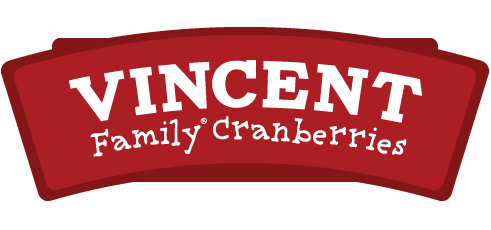10 Reasons to Enjoy Dried Cranberries
There are many more than 10 reasons to love dried cranberries as a part of a healthy diet. Here are 10 reasons from the cranberryinstitute.org.
- To help you eat more fruits, ChooseMyPlate suggests trying dried fruits, including dried cranberries, as a snack because they are easy to carry and store well. For parents, ChooseMyPlate encourages eating dried fruit instead of candy.1
- Scientists have shown that avonoids give fruits and vegetables most of their antioxidant properties and that a avonoid-rich diet may reduce the risk of cardiovascular disease.2
- Cranberries naturally contain the avonoid, proanthocyanidins (PACs). The unusual structure
of the PACs found in cranberries o er bacterial anti-adhesive properties not found in other commonly consumed fruits and vegetables.3 - The PACs in cranberries may help prevent the adhesion of certain harmful bacteria, including E. coli, that are associated with urinary tract infections (UTIs).4,5
- The avonoids in cranberries, including PACs, may also help to inhibit the bacteria associated with gum disease and stomach ulcers, and may help protect LDL-cholesterol (“bad” cholesterol) from being oxidized.6-10
- Not only do cranberries have PACs, but dried cranberries are also a good source of ber – 10% of the Daily Value – with 2.3 grams per serving (40 gram serving). And 1/2 cup of dried cranberries is equal to one serving of fruit (one cup), according to MyPlate recommendations.1
- The amount of sugar in dried cranberries is equal to that of other dried fruits, like raisins and dried cherries. Dried cranberries are sweetened because unlike other berries, cranberries are naturally low in sugar and high in acidity, so they require sweetening to be palatable.
- A pilot study conducted by the University of Wisconsin-Madison found that women with recurring UTIs reported a reduction in UTIs for up to six months after consuming one serving of dried cranberries per day for two weeks.11
- Dried cranberries can easily be added to oatmeal, rice and grain side dishes, meat entrées, casseroles, salads, yogurt, cottage cheese, sandwich wraps, home baked cookies, mu ns and breads, and more – dried cranberries are a tasty complement to a variety of dishes!
- Dried cranberries are truly locally grown. As one of the three widely farmed, commercially cultivated fruits native to
North America, cranberries are farmed on over 50,000 acres (20,200 hectares) across the northern United States and Canada!
1. United States Department of Agriculture. Choose MyPlate. Tips to help you eat fruits. http://www.choosemyplate.gov/food-groups/fruits-tips.html. Accessed: May 24, 2012.
2. Chun, OK, et al. Estimation of antioxidant intakes from diet and supplements in U.S. adults. J Nutr. 2010;140:317-324.
3. Howell AB, Reed J, Krueger C, Winterbottom R, Leahy M. A-type cranberry proan- thocyanidins and uropathogenic bacterial anti-adhesion activity. Phytochemistry 2005; 66 (18): 2281-2291.
4. Howell A. Cranberry Proanthocyanidins and the Maintenance of Urinary Tract Health. Crit Rev Food Sci Nutr 2002; 42(S): 273-278.
5. Gupta K, Chou M, Howell A, Wobbe C, Grady R, Stapleton A. Cranberry products inhibit adherence of p- mbriated Escherichia coli to primary cultured bladder and vaginal epithelial cells. J Urol 2007; 177(6): 2357-2360.
6. Burger O, Weiss E, Sharon N, Tabak M, Neeman I, and Ofek I. Inhibition of Heli- cobacter pylori adhesion to human gastric mucus by a high-molecular-weight constituent of cranberry juice. Crit Rev Food Sci Nutr 2002; 42(S): 278-284.
7. Bodel PI, Cotrain R, Kass EH. Cranberry juice and the antibacterial action of hippuric acid. Journal of Laboratory and Clinical Medicine 1959; 54: 881-888.
8. Yamanaka-Okada A, Sato E, Kouchi T, et al. Inhibitory e ect of cranberry polyphenol on cariogenic bacteria. Bull Tokyo Dent Coll. 2008; 49(3): 107-112.
9. Koo H, Nino de Guzman P, Schobel BD, et al. In uence of cranberry juice on glu- can-mediated processes involved in Streptococcus mutans bio lm development. Caries Res 2006; 40(1): 20-27.
10. Bhagwat S, Haytowitz DB, Holden JM. USDA Database for the Flavonoid Content of Selected Foods, Release 3. Nutrient Data Laboratory, Beltsville Human Nutrition Research Center, Agricultural Research Service, U.S. Department of Agriculture. September 2011.
11. Experimental Biology, April 21-25, 2012. Late-Breaking Program Abstract. LB326 Clinical Trial of Dried Cranberry Consumption to Reduce Urinary Tract Infection Incidence in Susceptible Women. A.E. Burleigh, S.M. Benck, S.E. McAchran, J.D. Reed, C.G. Krueger, C. Khoo and W.J. Hopkins. University of Wisconsin School of Medicine and Public Health, UW Hospital and Clinics, UW-Madison and Ocean Spray Cranberries, Inc.

